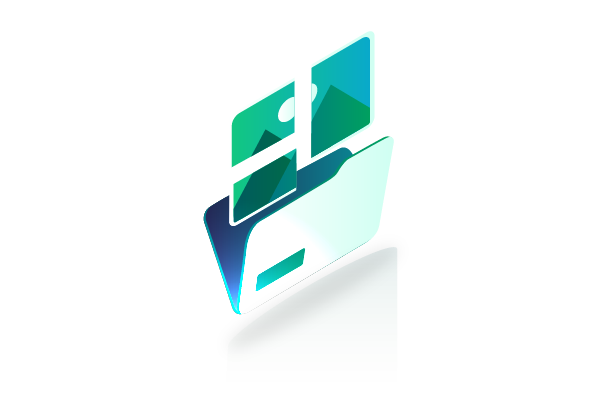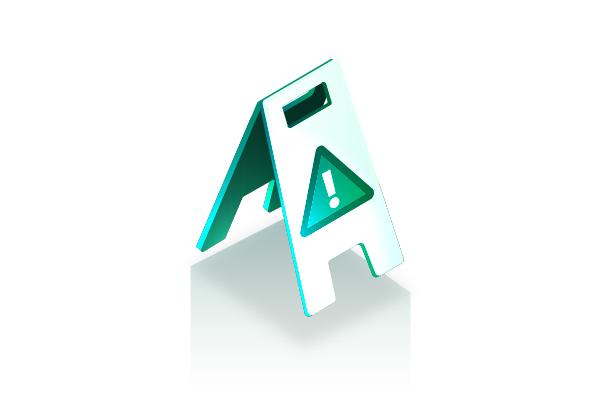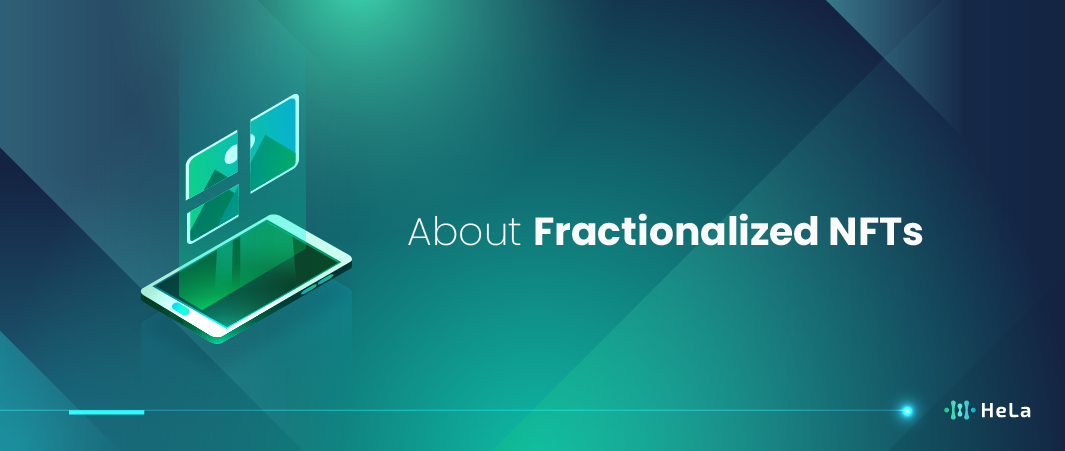Fractionalized NFTs address these limitations by introducing a revolutionary concept of the destruction of NFT owners into tradable pieces, giving the possibility for several people to invest in and own a single asset in a fractionated way. With a similar fractional ownership model, the concept of owning expensive digital assets is somewhat democratized, leading to a diversity of investors. Divide NFTs up into shares that will be fractionalized; in this way, liquidity improvement will be facilitated, diversification will be fostered, community engagement will be affirmed, and new opportunities for monetization and revenue sharing will be created.
In this inquiry, we will look into the fractionalized NFTs, examining the positive points, the demerits and their impact on the creators and investors, as well as the broad digital ecosystem. We look at the basic tenants, platforms and protocols that make NFT fractionalization work; the obstacles and benefits of buying into this new ownership ecosystem. Through getting a grasp on the intricate complexity and possible utilization of fractionalized NFTs, we are able to traverse the modest landscape of digital assets, uncovering new paths for partaking, innovating, and creating values in the digital economy.
What is a Fractionalized NFT?

Having the opportunity to own fractionalized tokens is a new path towards ownership of assets in the digital world, especially in the NFT area, which is growing in size daily. At heart, such platforms contribute to the efficiency of unique assets, where a single NFT can be split into multiple tokens, and thus more people have the opportunity to invest in and own a part of it. From this concept, on the one hand, the investor base of NFTs is broadened, and on the other hand, new movements arise in the market dynamics.
A remarkable feature of fractionalized NFTs is their power to ease the process of buying fractions of an NFT. Conventional NFT purchases had the prerequisite of having a huge amount of capital set up on the table, as buyers were supposed to pay once for the whole asset. In contrast to the bold, fractionalization lets people hold as little as a small drop of crypto to become investors. For this reason, many NFTs are available on the market now. By breaking the notion of priesthood of ownership and embracing disintermediation, which is characteristic of blockchain technology, more people will have a chance of active economy planning through the digital space.
Liquidity can also be improved to a certain extent in the market by fractionalizing NFTs. Through splitting NFTs into marketable pieces, investors get the opportunity to trade fragments instead of trying to look for an individual who will buy the whole property. The question arises as to why liquidity, stating that the NFT could have more activity and a dynamic trading environment. It could be that this feature of the NFT is robust, and it could lead to less volatility because it will discover more price discovery mechanisms.
Having the opportunity to own fractionalized tokens is a new path towards ownership of assets in the digital world, especially in the NFT area, which is growing in size daily. At heart, such platforms contribute to the efficiency of unique assets, where a single NFT can be split into multiple tokens, and thus more people have the opportunity to invest in and own a part of it. From this concept, on the one hand, the investor base of NFTs is broadened, and on the other hand, new movements arise in the market dynamics.
Benefits of Fractionalized NFTs

Fractionalized NFTs offer several benefits to both creators and investors, contributing to the growing popularity of this innovative concept within the NFT space.
Accessibility and Democratization of Ownership
Fractionalized NFTs fundamentally reshape the landscape of ownership in the digital world by making high-value assets accessible to a broader audience. Traditional NFT ownership often requires significant financial resources, limiting participation to affluent individuals or institutions.
Fractionalization breaks down these barriers by allowing anyone to invest in fractions of valuable assets. This democratization of ownership not only empowers individuals who may not have the means to purchase entire NFTs but also democratizes access to cultural and artistic assets. Artists can reach a global audience, while investors can diversify their portfolios with fractional ownership across various creative works, collectibles, and digital assets.
Liquidity Enhancement
Fractionalized NFTs make the NFT market even more liquid, providing an equal liquidity factor for previously illiquid assets and trading assets by fraction. Instead of the whole NFTs that can potentially get transferred among many wallets and then sit stacked like that for extremely long timeframes, the fractionalized shares of IL assets are certainly easier to buy and sell.
Also Read: Top 10 Fastest Blockchain Platforms in 2024
This significant liquidity boost paves the way for smooth transaction processing and, in turn, enables a fair price to be found. Moreover, fractionalized NFTs create an opportunity for secondary markets where investors are able to exchange parts of NFTs. This in turn leads to the formation of dynamic ecosystems that appear as a result of activity in the NFT space, such as buying, selling and trading for fractions of NFTs.
Diversification Opportunities
The multiple fractions of NFTs benefit investors by giving them an opportunity to extend their exposures to a wide range of assets. Investors can decide to invest funds in a single non-fungible token or distribute funds between a variety of fractionalized NFTs, which can reduce risks and increase expected returns.
This diversification strategy can be a good method of averting the expected level of volatility and uncertainty that comes with a tricky individual investment in the NFTs. Traders can express their interests, preferences, and risk tolerance through tailored portfolios that consist of multiple aspects, including art, virtual real estate, virtual currencies, and intellectual property.
Also Read: Top 5 Layer 1 Crypto Projects Stand as Pillars of Innovation in 2023
Collaborative Ownership and Community Engagement
While some fractional NFTs may appear to be a possible trifle, they are not. They encourage collaborative ownership structures and encourage individuals to participate within community frameworks. Sharing possession of an asset achieves a shift in its ownership structure, making fractional owners into owners of the asset, thus making these the principal decision makers concerning the management, utilization, and monetization of the asset.
By using this cooperative model, creators, investors, and interested parties are enabling the product development process based on joint thinking, and as a result, they are shaping the future of the particular asset. Therefore, joint NFTs are also a tool for direct engagement between artists and their audiences, and as a result, this generates more intimate and genuine relationships within the community. Artists may as well make use of the fractional ownership feature to befriend their audiences, provide special benefits and develop a sense of belonging among their constituencies.
Monetization and Revenue Sharing
Because of NFT fragments, artists and creators will be able to enjoy new ways of making their digital assets generate revenue, with the creators remaining the owners and keeping control of their work. Through fractional NFTs to creators, they can access the needed capital without taking ownership of one’s work. And further, fractionalization of NFTs gives a chance to fractional investors who could benefit from the revenue-sharing model where they collectively receive money through royalties, resale proceeds, licensing fees, and sponsorship deals.
The model of revenue sharing is based on the principle of coordination and engagement between creators and investors aimed at attracting the asset, which would be invested in the long term. Additionally, fractionalized NFTs are the portal to a new form of monetization for digital groups and content creators, who are now able to capture the value of the assets and intellectual property owned by the group.
Risks Involved in Fractionalized NFTs

Fractionalized NFTs offer numerous benefits, but they also come with certain risks that investors and participants should consider. Here are some of the key risks involved in fractionalized NFTs:
Market Volatility
Market volatility, which can be defined as the variability of NFT prices within the market, is an important indicator used by market participants to gauge the health of the market and identify potential areas of risk. Unlike unitary NFTs that place the emphasis on liquidity and accessibility, fractionalized NFTs remain exposed to volatility and flexibility.
Factors such as investor sentiment, demand and supply movements, and speculative activity may cause high price-volatility in the cryptocurrency market, which means attractive opportunities and risks for both investors. High volatility carries with it the risk of sudden price movements that might end up causing large losses for profitable or losing investors. The problem is even further compounded by the fact that historical data and a successful pricing model are missing for many NFT assets, creating more risk and complexity for overall market volatility.
Smart Contract Risks
Smart contracts in NFT fractionation are the primordial framework, automating core deals, title administration, transactions, and proceeds allocation. Moreover, smart contracts can also push the envelope, as they are not immune to dangers and weaknesses.
Bugs in code, security solution flaws, and vulnerabilities may cross-confer fractional NFTs to a variety of benefits, including hacking attacks, exploits, or failures in smart contracts. Moreover, the immutable and widespread nature of the blockchain implicates the whole process of remedy and makes it a cumbersome task to repair the errors or restore the funds once the smart contract is running, bringing about a risk to the investors.
Lack of Regulation and Oversight
Currently, the regulatory environment around NFTs and Decentralized Finance (DeFi) is slowly but steadily being drafted and is still evolving, so the regulatory oversight might lack uniformity among various jurisdictions.
The absence of transparent regulations, including the application of rules and equity regulations, puts NFT fractionalization blockchain users in a legally hazardous position. Regulatory dilemmas might result in requirements to be investigated, legal action and lawsuits that would destabilize operations and weaken investor’s confidence. Additionally, a lack of regulatory supervision attracts the attention of fraudulent schemes, scams, and market manipulators that will pose a threat to the biggest investors funds and assets.
Counterparty Risk
Further complicating A fractionalized NFT is a counterparty risk facility that shares between creators, investors, platform operators and custodians. Clearing involves the practice where a centralized entity undertakes a transaction between two or more parties, covering the risks that one or more parties fail to fulfill their undertakings or default on the agreements, which result in financial losses or the operation’s disruptions.
In a similar vein, platform managers may also experience technical problems, security breaches, or operational failures that affect the system and make it less effective. The same is true when talking about other partners. They may attempt to cheat, have poor management or turn out to be insolvent, which will be a big problem for the other shareholders.
Illiquidity of Fractional Shares
The liquidity of fractional shares can be restricted by a number of factors, but in specific cases, the fractionalized NFT concepts can help solve this by permitting fractional ownership and trading. Thin order books, low trading volume, and the inefficiency of the market can impede investors’ intentions to invest at the market’s lowest price as they want.
Besides, specialized regulation, the hindering aspects that are inside the platform, and the factor of market may amplify illiquidity, resulting in confusion among investors over exiting from their positions and getting profit. The fact that illiquidity leads to the risks of price slippage, delayed transactions, and problems with timely trade execution, as well as position unwinds, mainly during periods of market anxiety or volatility, is a direct consequence of the problem.
Conclusion
As an NFT is minted or more copies are made and sold, the remaining fraction is fractionalized, and they are referred to as fractionalized NFTs. These NFTs represent a pioneering advance in the digital asset industry that provides a new avenue for ownership, liquidity, and engagement.
With fractionalized NFTs, individuals can now own and trade a part of an exclusive asset, thus democratizing access to valuable assets, addressing liquidity problems in the marketplace, creating opportunities for diversification, drawing communities together, and thus presenting new monetizing opportunities for creators and investors. Fractionation of NFT is being facilitated by divisions and protocols, and as a result, this new concept of ownership becomes possible, provided that end users can engage in fractional ownership designs securely and with no difficulties. But the fractionalized NFTs too can be considered to be big risks, which the investors and participants must ward off with great care and consideration.
Volatility of the market, risks related to smart contracts, uncertainties of regulation, risk of counterparty and illiquidity of fractional shares are known as the more important risks of fractionalized NFTs. An effective way of dealing with these risks is to employ risk management strategies, exercise due diligence properly, adhere to regulations, and monitor changes in the financial market continually.
Despite such prohibitive factors, the advantages of fractionalized NFTs are immense. They may be safely shared by the creators, the investors and lovers in an unprejudiced manner, bringing inclusivity and transparency to their work. The maturity of the ecosystem as well as regulatory frameworks can only last for a while. But for fractionalized NFTs, it is a matter of time for their role in ownership, finance, and culture to become prominent in the digital era.
Disclaimer: The information provided by HeLa Labs in this article is intended for general informational purposes and does not reflect the company’s opinion. It is not intended as investment advice or a recommendation. Readers are strongly advised to conduct their own thorough research and consult with a qualified financial advisor before making any financial decisions.

